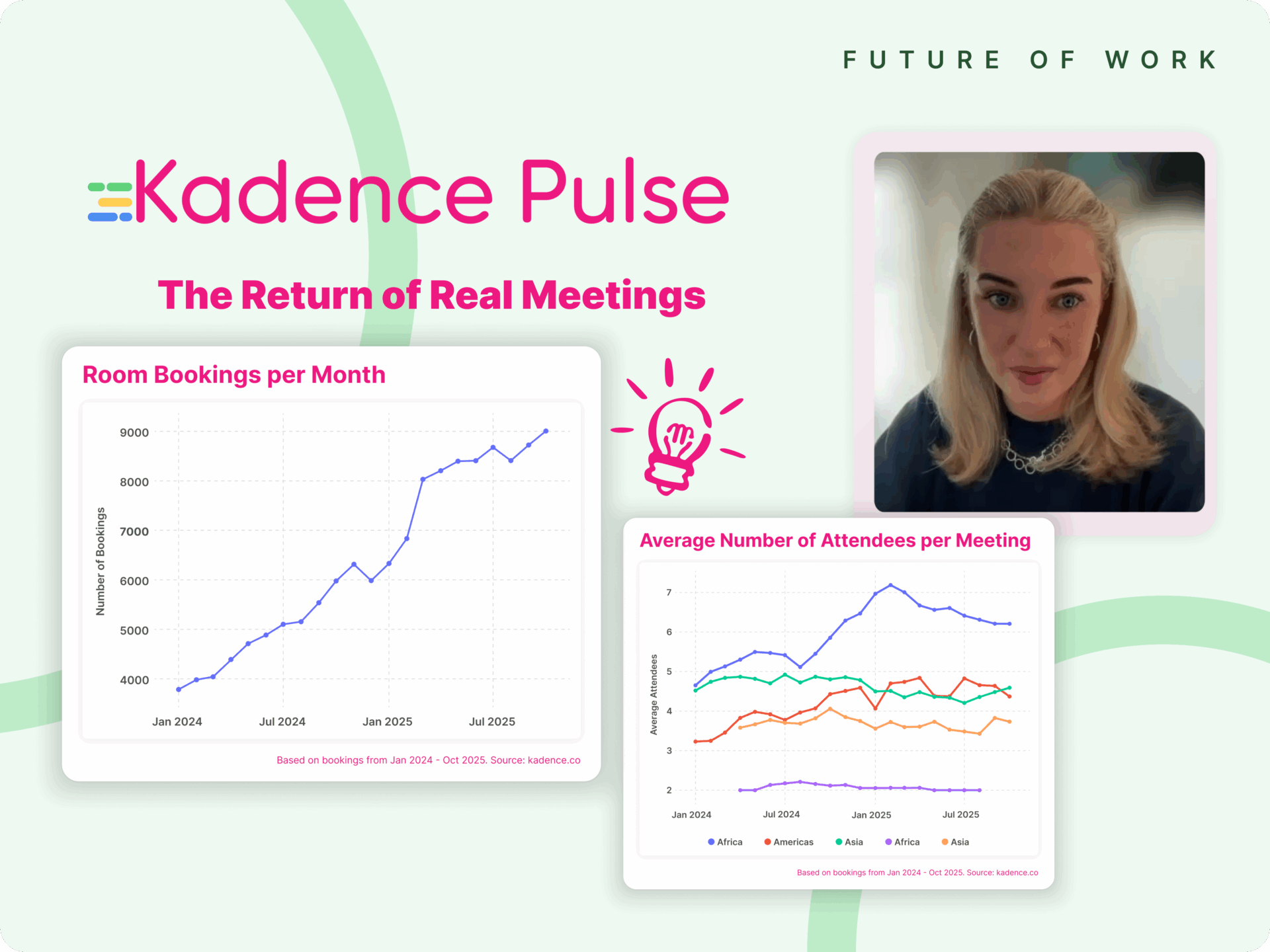Nick Bloom’s latest report on The Future of Working from Home looks, at first glance, like a picture of calm. Across multiple datasets, full days worked from home have hovered around 25 percent since 2023. Kastle’s office swipes and Placer.ai’s cell data show the same flat trend. After years of turbulence, the numbers have stabilized.
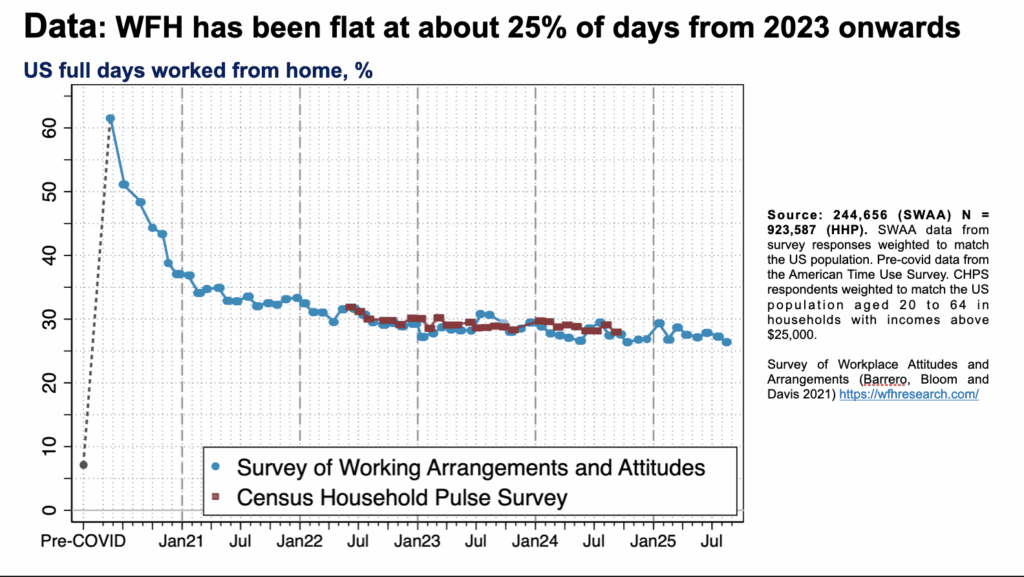
But look closely and something else is happening. In several of Bloom’s charts, office activity has started to climb again. It is small but clear. In technical charting terms, it is what traders call a breakout — a moment when the line breaks its pattern and begins to move.
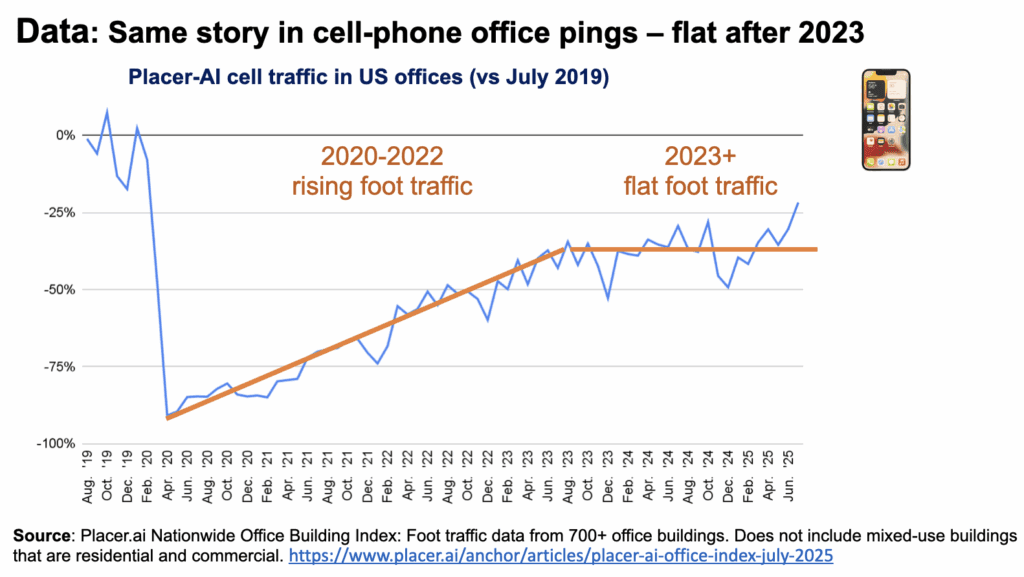
This is not confidence returning to the office. It is confusion. Companies are reacting to pressure from investors, headlines, and culture rather than data. They are chasing stability by forcing motion.
The data says we have equilibrium. The behavior says we do not.
Watch me and Nick in conversation as we talk about these latest trends.
The Illusion Of Stability
Since 2020, the most common office policy has been no policy at all. The second most common is conflicting policies. And almost as many companies have cycled through three to five versions of their office rules as those that have kept one.
That is not leadership. That is improvisation.
What this really shows is that many firms are still guessing. They are not using data to understand how their workplaces are actually being used. Instead, they are experimenting with attendance targets, hoping that one will finally create connection.
Every change looks like action, but most are just noise.
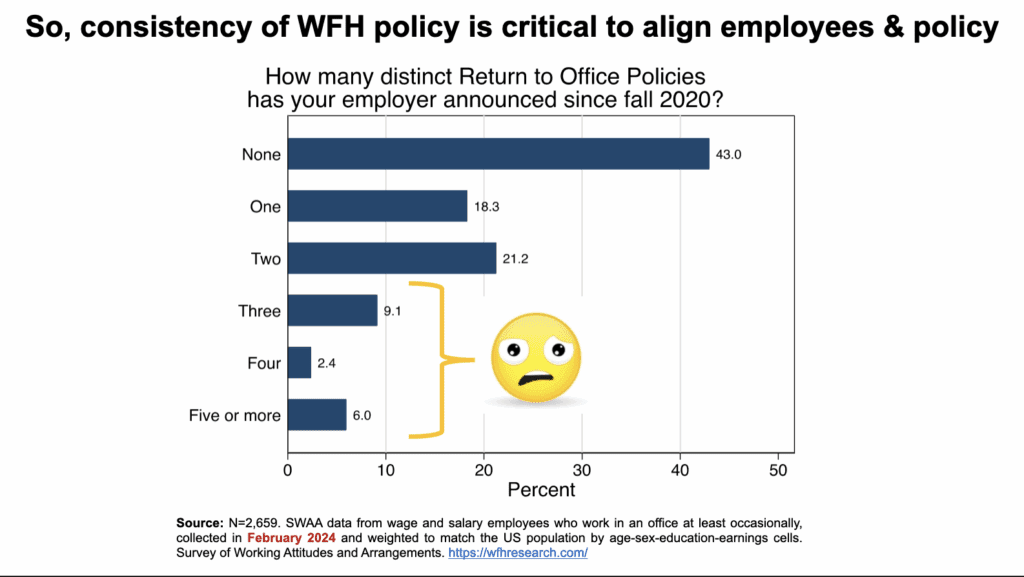
The Real Disconnect
The deeper issue is not policy inconsistency but misunderstanding. Managers want people in to spend more time with their managers. Employees want to spend more time with their peers.
Bloom’s international survey of more than 20,000 workers shows that the top reasons people value the office are socializing with coworkers and collaborating face to face. Time with managers ranks far lower. That difference in motivation is what is breaking the workplace more than any policy.
I saw it clearly when interviewing candidates. One told me his manager called the team back to the office in Ireland to spend more time together. But the company canceled Wednesday pub days, which had been the team’s one consistent ritual. Within six months, half the team had left. The manager achieved attendance, not culture.
The lesson is simple. Employees are not resisting the office. They are resisting the lack of meaning when they get there.
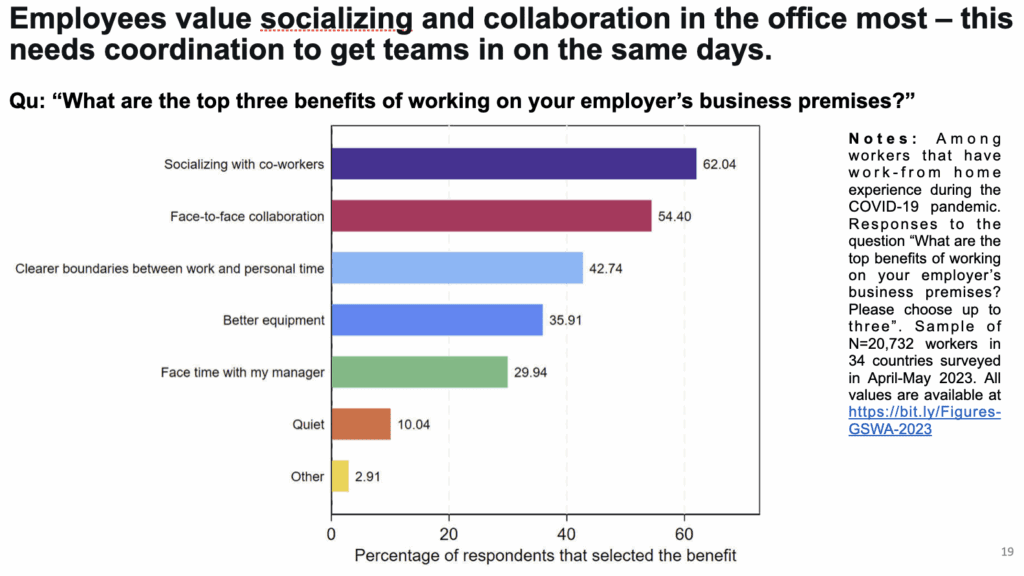
The Shift Beneath The Surface
While the proportion of remote workdays has stabilized, the workforce itself has changed shape. The share of employees living more than 50 miles from their workplace has more than doubled since 2020, led by workers in their thirties and forties. These employees now commute less often but stay longer when they do, and they expect those days to matter.
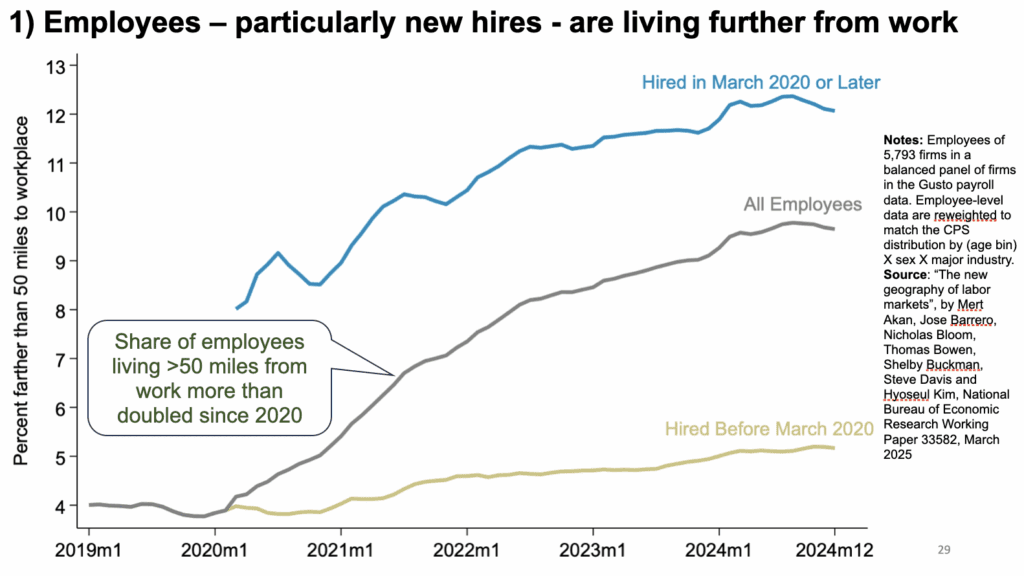
Disability employment has increased since the pandemic, a sign that remote flexibility has opened the door for more people to participate in the workforce. That progress is fragile and should not be lost as office time increases again.
Even leisure patterns have shifted. Data from INRIX shows a 178 percent rise in weekday golf rounds at 3 p.m. on Wednesdays compared with 2019. This is not about golf. It is about the redistribution of time. Work and life now overlap in ways that old schedules cannot contain. The modern workweek has a new rhythm, and the office must fit into it.
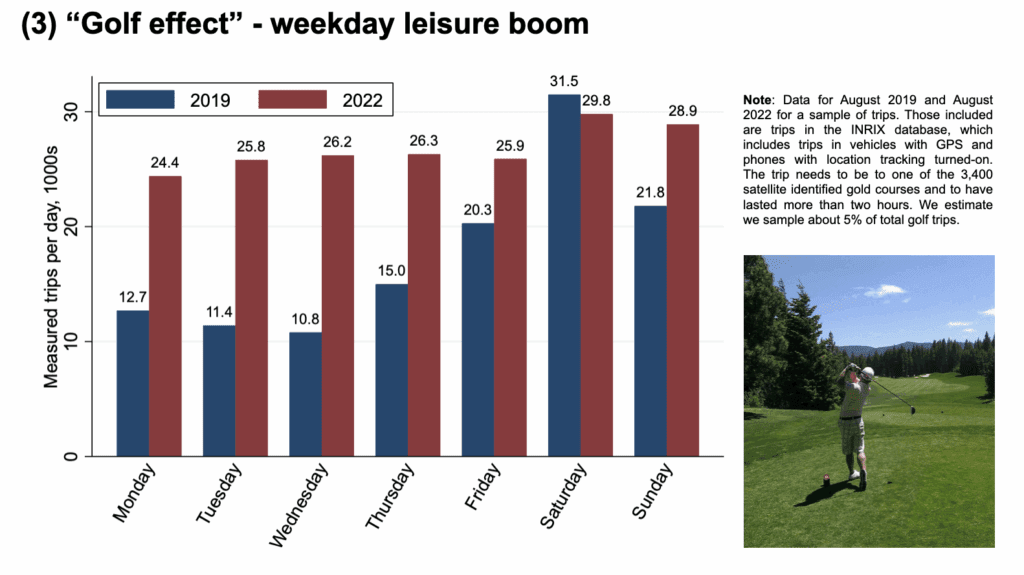
From Guessing To Guidance
What Bloom’s breakout really signals is not a return to the office but a failure to interpret what the data is saying. Companies are mistaking motion for momentum. They are trying to rebuild connection through mandates instead of through understanding.
The next era of leadership will not be defined by who calls people in or how often. It will be defined by who uses intelligence to orchestrate the office around real behavior. The goal is not compliance but coordination. Not more days in the building, but better days together.
From Policy To Practice
This is where Kadence comes in.
The data in Bloom’s report shows that companies no longer have a workplace problem — they have a coordination problem. Leaders are trying to align people, space, and time without the intelligence to see how work actually happens.
Kadence helps solve that gap. Its SpaceOps capabilities bring together data on attendance, bookings, and building use so workplace teams can run their offices like living systems. It gives leaders a single view of how space is used, when teams connect, and where collaboration truly happens.
The companies that adopt this approach will stop reacting to noise and start leading with clarity. They will know when and where work thrives, and they will design spaces that reflect it.
The data says stability. The workplace says chaos. Kadence helps close that gap.
Learn more and book a demo with our workplace operations experts.



